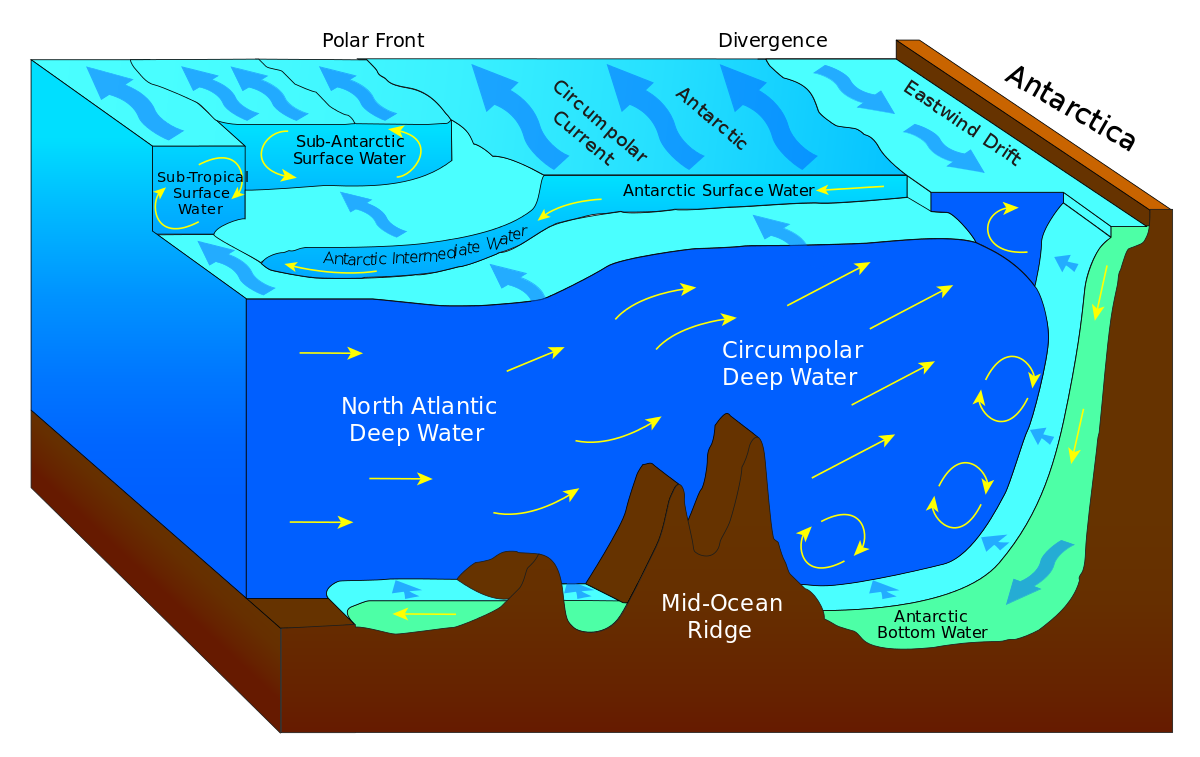Geography Notes On – Water Mass – For W.B.C.S. Examination.
The properties of the waters in the coastal ocean are constantly changing. Seasonal influences are magnified by the proximity of land, which brings with it an increased annual range in atmospheric temperatures and a concentration of freshwater supply through river runoff. This makes the characterization of water masses more difficult than in the deep ocean, where most of the water is not in contact with the atmosphere.Continue Reading Geography Notes On – Water Mass – For W.B.C.S. Examination.
In the absence of air/sea interaction processes, the physical properties of water parcels can only be changed when they mix with water parcels of different origin and therefore different properties. Without mixing, water parcels retain their temperature and salinity unchanged. Temperature and salinity are therefore know as conservative properties, in contrast to non-conservative properties such as oxygen or nutrients which participate in biochemical processes and therefore show changing concentration levels even in the absence of mixing. Temperature and salinity are therefore the most suitable hydrographic properties to define water masses and study their distribution.
Water masses and water types
In deep sea oceanography a water mass is usually defined as a body of water with a common formation history. This is based on the observation that water renewal in the deep ocean is the result of water mass formation in contact with the atmosphere, spreading from the formation region without atmospheric contact, and decay through mixing with other water masses. During the spreading and mixing phase a water mass can be followed, and its mixing with other water masses quantified, by analyzing the distribution of temperature and salinity.
The idea of a water mass as a body of water implies that it occupies a certain volume in the ocean. This should not be understood to construe sole occupation of a particular ocean region. Sole occupation is the situation in water mass formation regions, where only the locally formed water mass is present. Outside their formation regions water masses mix, and the resulting mixtures share parts of the ocean. Only in theory is it possible to separate the water masses contained in the mixture into sub-volumes, so that each water mass has sole occupation of its particular sub- volume. But the theoretical argument shows that water masses are physical entities which occupy definable volumes.
The basic tool for water mass classification and analysis is the temperature-salinity (TS-) diagram in which the two conservative properties are plotted against each other. A homogeneous water mass, ie a water mass of uniform temperature and salinity, shows up in a TS-diagram as a single point. North Atlantic Deep Water and Antarctic Intermediate Water are two examples of such water masses. Other water masses display some variation of their properties with depth and are represented in TS-diagrams by curves. The best known examples of this kind are the water masses of the permanent thermocline known as Central Water.
The temperature-salinity combinations identified by the water mass points or curves are known as source water types. In the theory of water masses a water type is a point in the TS-diagram; water with the corresponding temperature and salinity may or may not exist. Source water types are TS-points representing water masses as they exist in their formation region. Because they are associated with real water masses it may be more difficult to see why they, too, do not necessarily represent an existing volume of water. But water mass properties are not constant in time; they reflect variations in the atmospheric conditions at the time of water mass formation. One winter may be colder than the previous winter, or it may bring less rain than in the year before, and as a result the newly formed water that is added to the total volume of the water mass may be slightly colder or saltier.
If we define the water mass by taking the average temperature and salinity from the two years, the resulting source water type gives a good description of the water mass; but it does not represent any water as it actually exists.
A complete description of a water mass requires specification of its source water type (or source water types) and standard deviations (variances) for temperature and salinity. A homogeneous water mass that can be represented by a single source water type has only a single standard deviation for temperature and another single standard deviation for salinity. A water mass represented by a TS-curve (an infinite series of source water types) has two standard deviation curves which together define an envelope around the definition curve.
It takes many years of observations to establish standard deviations for source water types. Often these observations are not available and it is not possible to define the standard deviation envelope. In practice water masses are often defined without standard deviations solely by their source water types, and the two are considered to be the same thing. In the present context it is important to be aware of the difference: a water mass is a physically existing body of water; a water type is a mathematical construct to describe it.
Please subscribe here to get all future updates on this post/page/category/website


 Toll Free 1800 572 9282
Toll Free 1800 572 9282  mailus@wbcsmadeeasy.in
mailus@wbcsmadeeasy.in



















































































































